Subscribe to:
Post Comments (Atom)
skip to main |
skip to sidebar
A million seconds pass in 12 days.
A billion seconds pass in 31 years.
A trillion seconds pass in 31,688 years!
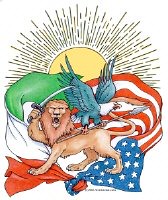
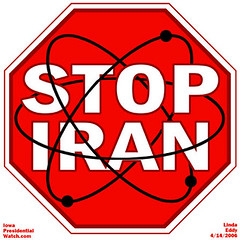
Farzandaan-e Koorosh Barkheezeed
ATOM SUBSCRIBE
MUST READ POSTS!

>KHOMEINI'S BOOKS in English
Mullahs' Threat Not Sinking In
Can USA Avoid Attacking Iran
Who was the Ayatollah Khomeini?
Jimmy Carter's Illegal Demands on Shah
IRAN FINAL SOLUTION
ARCHIVES by Detail
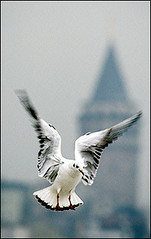

Click on the graphics below to see the true face of Islam.
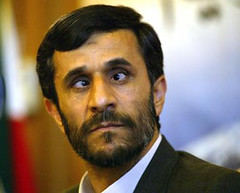

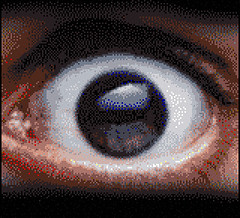


Dedicated to the removal of the Islamic Regime in Iran ---- I prefer to Die on my feet than Live on my knees من مرگ ایستاده روی پای خود را بر زندگی خم شده روی زانو ترجیح میدهم
| National Debt Clock |
A million seconds pass in 12 days.
A billion seconds pass in 31 years.
A trillion seconds pass in 31,688 years!
STM
stat
FREE BLOG FEEDS
Add to Yahoo Subcribe Code
Add to Google Subscriptions Code
Plain Text Subscribe Code
E-mail Subscription Code
Subscribe to Anti-Mullah by Email


Farzandaan-e Koorosh Barkheezeed
LINKS

- TERROR NEWS
- WORLD VIEWS
- NEWS VIEWS
- RUTHLESS ROUNDUP
- VIDEOS
- GRAPHICS
- MULTI-LINGUAL
Visit Alan Peter's other blogs:
"INSTANT Terror Map - SELF-UPDATES every six minutes"


Click on the graphics below to see the true face of Islam.
"ISLAMIC EXECUTION"


"Death by Decapitation"

"The Gentle Islam"

Blog Archive
-
►
2012
(501)
- Dec (2)
- Nov (28)
- Oct (30)
- Sep (57)
- Aug (57)
- Jul (53)
- Jun (49)
- May (63)
- Apr (41)
- Mar (47)
- Feb (39)
- Jan (35)
-
►
2011
(666)
- Dec (35)
- Nov (49)
- Oct (25)
- Sep (39)
- Aug (51)
- Jul (59)
- Jun (65)
- May (65)
- Apr (84)
- Mar (65)
- Feb (60)
- Jan (69)
-
►
2010
(611)
- Dec (40)
- Nov (35)
- Oct (74)
- Sep (67)
- Aug (70)
- Jul (43)
- Jun (57)
- May (46)
- Apr (30)
- Mar (36)
- Feb (57)
- Jan (56)
-
►
2009
(861)
- Dec (87)
- Nov (75)
- Oct (86)
- Sep (100)
- Aug (63)
- Jul (79)
- Jun (58)
- May (61)
- Apr (57)
- Mar (55)
- Feb (72)
- Jan (68)
-
▼
2008
(587)
- Dec (69)
- Nov (65)
- Oct (79)
- Sep (41)
- Aug (51)
- Jul (52)
- Jun (51)
- May (26)
- Apr (36)
- Mar (39)
- Feb (43)
- Jan (35)
-
►
2007
(431)
- Dec (36)
- Nov (20)
- Oct (29)
- Sep (39)
- Aug (31)
- Jul (44)
- Jun (32)
- May (23)
- Apr (46)
- Mar (64)
- Feb (36)
- Jan (31)
About Me

- Alan Peters
- For many years involved with intelligence and security matters in Iran with significant access at top levels during the rule of the Shah, until early 1979. Currently an Iran SME (subject matter expert), analyst/commentator, and multi-linguist.



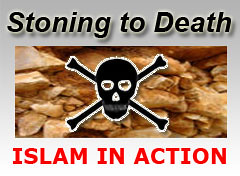
1 comment:
Former Iranian Pres Blames Tehran for Lockerbie
Wednesday, 16 July 2008, 2:19 pm
Column: Ludwig De Braeckeleer
Former Iranian President Blames Tehran for Lockerbie
Pan Am 103 destroyed in revenge for downing of an Iranian civilian airliner in 1988, says Bani-Sadr
By Ludwig De Braeckeleer
"270 people died when Pan Am 103 was blown out of the sky over Lockerbie, Scotland on Dec. 21, 1988. It was the worst-ever act of airline terrorism against the United States. It's also been called the world's biggest unsolved murder."
--Shadow Over Lockerbie, John Biewen and Ian Ferguson
SEARCH NZ JOBS
Search Businesses FindA
Find the property for you
In an interview conducted on May 16, Abolhassan Bani-Sadr, the former president of the Islamic Republic of Iran, told me that Tehran, not Libya, had ordered the bombing of Pan Am 103 in revenge for the downing of an Iranian civilian airliner by the USS Vincennes a few months earlier.
On July 3, 1988, the navy cruiser USS Vincennes, also known as "Robocruiser," shot down Iran Air Flight 665 over the Persian Gulf. The civilian airliner was carrying mostly Muslims on their pilgrimage to Mecca -- 290 died, most Iranians.
According to Bani-Sadr, in the immediate aftermath of the Lockerbie tragedy, Mohtashami-Pur, the then minister of the interior, acknowledged in an interview that he had contracted Ahmad Jibril, the leader of a Palestinian organization, to bomb an American airliner. The interview was scheduled for publication the following day. Hours before distribution, the newspaper was shutdown.
Flashback
In the aftermath of the USS Vincennes accident, top figures in the Iranian government held a series of meetings in Beirut with leaders of Ahmed Jibril's terror group, the PFLP-GC (Popular Front for the Liberation of Palestine-General Command).
"Everybody in US intelligence knew about Iran's intention to bomb an American airliner in response to the downing of one of its own only months earlier. We knew that," former CIA operative Robert Baer explains.
"There was a smoking gun in July '88 that Iran hired Jibril to knock down at least one American plane," Baer told me. And indeed, media have long reported that high-ranking Iranian officials held a meeting with Dalkamoni, a trusted lieutenant of Jibril and a man said to be only known by the CIA as Nabil. In late October '88, Dalkamoni and Ghadanfar, alias Nabil Massoud, were arrested in Frankfurt where they were running an operation to destroy airliners.
"I was assigned to Paris in 1988 running down leads with French police on both Pan Am 103 and UTA [Union des Transports Aeriens] -- I do not know the ultimate judgment on the leads we produced. Or why precisely the case is being reviewed by Scotland. Keep in mind in your research that intelligence and evidence are two separate domains. Often it's the case [that] compartmented intelligence is not shared with the FBI. I do not know what the FBI was given or not given," Baer added.
"There's a world of intercepts and information from sources that is never shared with the FBI. This is because the controller of the information doesn't want to compromise the source. At the CIA, we look at the FBI as trying to get convictions, while intelligence is to get at a proximate truth. "
Specific Threat From Tehran
"You will remember that for many years, Iraqi used chemical warfare against Iranians. And we never retaliated. Because we abide by our Islamic principles," stated Mohammad Jaafar Mahallati, Iran's ambassador to the United Nations, on the day following the shutdown of the Iranian airliner.
"And this is a principle that we always abide by. We act upon our own Islamic principles, which to some extent covered international regulations."
"We will use any legitimate means to exercise our right for self-defense. And therefore, acting in self-defense, we will use all legitimate means and ways in order to punish this act of terrorism. Not merely to punish. Punish for punishment. But [we will resort to] punishment to prevent further occurrence or recurrence of such unfortunate incidents."
Following the Vincennes accident, a spokesperson for the Iranian Embassy in London, Mohamed Beshti, predicted an act of revenge.
"We do not disclose our response but it will be an appropriate response to the magnitude of the American Crime," Beshti said.
Reacting to the downing of Airbus 665, Ali Akbar Mohtashemi-Pur swore that there should be a "rain of blood" in revenge. Mohtashemi had been the Iranian ambassador in Damascus from 1982 to 1985. He is widely believed to have helped to found Hezbollah in Lebanon and had close connections with the terrorist groups of Beirut and the Bekaa Valley.
The National Security Agency intercepted and decoded a communication of Mohtashemi linking Iran to the bombing of Pan Am 103. One intelligence summary, prepared by the US Air Force Intelligence Agency, was requested by lawyers for the bankrupt Pan American Airlines through the Freedom of Information Act.
A classified document prepared for the Multi-National Force during the first Gulf War reads: "Mohtashemi is closely connected with the Al Abas and Abu Nidal terrorist groups. He is actually a long-time friend of Abu Nidal. He has recently paid $10 million in cash and gold to these two organizations to carry out terrorist activities and was the one who paid the same amount to bomb Pan Am Flight 103 in retaliation for the US shoot-down of the Iranian Airbus."
Caveat: Former FBI Special Agent Richard Marquise led the Lockerbie investigation. Marquise has told me that the document came from a source of unknown reliability. However, careful reading shows that the source makes a clear difference between rumors and facts.
While parts of the document reads: "Mohtashemi is said to [have done this or that]," the paragraph regarding Pan Am 103 is factual. It reads: "He has recently paid…"
The difference of style cannot be ignored.
Confirmation of Bani-Sadr Allegation
Iranian Affairs Analyst Gholam Reza Amouzadeh told me that Mohtashemi-Pur tried at least once more to reveal his role in the Lockerbie bombing.
In January-February 1995, the Jahan e Islam magazine published an interview of Mohtashami-Pur. At the very beginning of the interview, Mohtashami-Pur said that he would soon reveal the "Lockerbie files" to the readers. But they never got the chance to read them.
The head of the office in charge of censorship, a branch of the Ministry of Culture and Islamic Guidance, run at the time by Mir Salim, a right-wing politician very close to the Supreme Leader, mailed a letter signed by the Police Authority to the printing house requesting that the interview not be published. Jahan e Islam was shut down immediately.
As chance would have it, the Council of Observation to the Press was in session the next day. All members of the council, including Karbaschi, a person very close to Rafsanjani, approved the order.
True Motivation
Mohtashami-Pur said that he had acted in revenge -- intekam (equal and just revenge) -- but his true motivation may reside elsewhere. By 1988, Iranian politics had become increasingly polarized between the Rafsanjani and the Mohtashemi factions.
Rafsanjani was in favor of a rapprochement with Washington. In July 1988, Rafsanjani stated in the parliament that "Iran should now attract those countries who could become friends instead of alienating them, as it had done in the past." Mohtashami-Pur was absolutely opposed to it.
On Sept. 26, 1988, a commando led by Mir Lohi, a Mohtashemi agent, attempted to assassinate Rafsanjani as he was leaving the parliament. Rafsanjani escaped but four of his Afghan bodyguards were killed and several others wounded.
The assassination attempt was widely perceived as a way to prevent a rapprochement with Washington. In a similar manner, the killing of Lt. Col. William Higgins in 1989 is also alleged to have been ordered by Mohtashemi in order to prevent the rapprochement of Syria with the US and again to derail attempts by Rafsanjani to better the relations of Iran with America.
Early Reactions to Bani-Sadr Revelation
Dr. Jim Swire lost his daughter Flora in the Lockerbie tragedy. On Jan. 11 of this year, Swire wrote to me that he never doubted who ordered the bombing, why they did it and who supplied the technology.
"As you know, I have always believed that it was Iranian revenge, whether or not the Libyans helped, and that the Syrians through Jibril supplied the technology," Swire said.
Michael Scharf is an international law expert at Case Western Reserve University in Ohio who helped draft the UN Security Council resolutions that imposed sanctions on Libya in 1992. "Though I always wondered about the possibility of a PFLP-GC connection to the Lockerbie bombing, I don't know enough about the persons/events you mention to offer any type of expert opinion about it at this point," Scharf wrote to me.
"It was largely based on this inside guy [Libyan defector Abdul Majid Giaka]. It wasn't until the trial that I learned this guy was a nut-job and that the CIA had absolutely no confidence in him and that they knew he was a liar. The CIA and the FBI kept the State Department in the dark. It worked for them for us to be fully committed to the theory that Libya was responsible," Scharf has said. Going even further, Scharf has argued that the Lockerbie trial had nothing to do, whatsoever, with justice.
Professor Robert Black, also known as the architect of the Lockerbie trial, is very knowledgeable about this affair. As I know that Black has seen some documents never made public about the investigation, I asked him how he felt about the news.
"What Bani-Sadr told you about Mohtashemi certainly does not surprise me. It coincides with what other people have suggested to me," Black said.
Marquise does not deny the possibility of an Iran-Syria role in the affair. But Marquise is adamant that no evidence linked the bombing to these countries.
"I never have said the evidence against Megrahi was direct or overwhelming but there is more evidence to implicate him, and Libya, than there is EVIDENCE to convict Jaffar, Jibril, Dalkamoni, Iran, Syria, etc. … All we had with them is lots of "intelligence," but no EVIDENCE. I cannot make that point more strenuously," Marquise wrote to me earlier this year.
"Did we convict all those involved? As you said yourself, there are probably more people involved than one man sitting in a Scottish prison. No we did not. And they live in Libya for certain. And no one ever said it was Libya and Libya alone. That is the only direction the EVIDENCE flowed," Marquise added.
"Marquise is right -- the body of intelligence on Lockerbie does not constitute evidence and cannot be introduced into court," Baer told me.
Marquise argued, "Did Iran contract with the PFLP-GC? Probably -- although, it cannot be proven in court. Did Iran ask Libya and Abu Nidal, as you stated in an earlier article? Perhaps -- although that too cannot be proven and never will be unless a reliable witness or two comes forward with documentary evidence."
I thus suggested that Iranian defector Abolghasem Mesbahi would be an ideal witness. As Marquise had never heard of him, I decided to ask Bani-Sadr if he could confirm his credentials.
Mesbahi Vetted
And indeed Bani-Sadr confirmed to me that he knows Mesbahi. Bani-Sadr also told me that Mesbahi was a high-ranking Iranian official and that he had indeed been involved in discussions regarding the release of hostages held by Hezbollah in Lebanon.
Mesbahi participated in at least four such meetings from August '88 to November '88. Bani-Sadr gives Mesbahi credit for the release of a specific hostage. Bani-Sadr has not been in contact with Mesbahi since 1997.
Three meetings between Richard Lawless, a person working directly for Vice President George H. W. Bush, and Iranian negotiators had taken place at Glyon, near Montreux, in late August and early September 1988. A fourth meeting occurred in early October 1988. Bani-Sadr could not provide any detail regarding Lawless.
The Iranians negotiators were Mohammad Javad Laridjani, Mahmoud Jamali, Nasrollah Kazemi Kamyab and Abolghasem Mesbahi. All of them are quite well known senior officials and worked for the Foreign Affair Ministry, except Mesbahi who was representing Rafsanjani.
Jamali was director general for international conferences at the Foreign Ministry. The official nature of these talks is abundantly clear from the high-ranking level of the participants.
In July 1997, German prosecutors interviewed Abolghasem Mesbahi in a case concerning the assassination of several Iranian Kurdish dissidents in Germany. Abolghasem Mesbahi is a former high-ranking Iranian intelligence agent, believed to be the son of one of the fathers of the Islamic Revolution.
German law authorities came to regard Mesbahi as a credible witness. In fact, based on his testimony, an Iranian and four Lebanese were convicted of killing several Iranian Kurdish dissidents in Germany.
According to Mesbahi testimony, Iran planned the attack as revenge after the US cruiser Vincennes shot down an Iran Air Airbus over the Strait of Hormuz earlier in 1988.
Mesbahi said that Ayatollah Ruhollah Khomeini personally ordered the revenge attack and that Foreign Minister Ali Akbar Velayati had carried out the planning of the attack on Pan Am 103 with Libya and guerrilla leader Abu Nidal. Bani-Sadr does not know of any direct collaboration between Tehran and the Abu Nidal Organization.
Velayati acquired his M.D. from the University of Tehran and a pediatrics degree from the Johns Hopkins University in 1971 and 1974, respectively. He was the foreign minister of Iran for about 16 years (Dec. 15, 1981, to Aug. 20, 1997), making him the longest-serving foreign minister in Iranian history. Velayati is the only high-ranking Iranian official who kept his post after the death of Khomeini.
Mesbahi alleged that parts of the bomb were put on a plane at Frankfurt airport, later assembled in London and finally loaded onto Pan Am 103. Many readers, including Dr. Swire and former FBI Special Agent Marquise, have interpreted that statement as the bomb being planted on the feeder flight, Pan Am 103A. This may or may not be what Mesbahi alleged. For instance, Gholam Reza Amouzadeh told me that Iran had two private airports in the Frankfurt area at that time.
Tam Dalyell has been a Labor member of the House of Commons from 1962 to 2005. On April 21, 1998, Dalyell asked as to why the police inquiry had not interviewed Abolghasem Mesbahi. His question remains unanswered to this day.
In late 1997 Bernazzani was in charge of the FBI's office of Hezbollah operations. According to Bernazzani, Mesbahi had been discredited among US analysts.
If German authorities found Mesbahi a very reliable witness regarding events that occurred in '92, I dare say that Mesbahi must be an extremely reliable witness regarding the Pan Am 103 bombing that occurred in '88 when he had full access to the highest level of Iranian Intelligence. I am therefore puzzled by Bernazzani's statement, even more so as I have been told that he never met Mesbahi.
An Accusation Allegedly Confirmed by Nidal
Atef Abu Bakr is a former spokesman for the Abu Nidal Organization (ANO) and one of Nidal's closest aides between 1985 and 1989. In a series of interviews published in the Arabic Al Hayat newspaper Bakr said that Abu Nidal told him that his organization was behind the explosion on Pan Am flight 103.
"Abu Nidal told a meeting of the Revolutionary Council leadership: I have very important and serious things to say. The reports that attribute Lockerbie to others are lies. We are behind it."
"If any one of you lets this out, I will kill him even if he was in his wife's arms," Abu Nidal added, according to Bakr.
L. K. Coleman is professor of communications, and chair of the department, at the American University of Technology in Lebanon. Court documents have established that Coleman has been a Drug Enforcement Administration (DEA) informant. He is currently writing a book on the bombing of Pan Am 103, to be titled The House on Sangamore. Coleman told me that he has obtained documents regarding Nidal and that he knows that Nidal planted the bomb on Pan Am 103.
Caveat: One should be very careful regarding the above information. Firstly, this writer has not seen the documents. Secondly, scholars have been tricked by impostors into believing that they were dealing with Nidal. Thirdly, Nidal is famous for having taken responsibility for acts of terror in which he had no participation whatsoever.
"Nidal's possible involvement was one more of the many questions which we feel absolutely demand an independent inquiry into Lockerbie," Swire said.
Warnings
James Shaughnessy, an American lawyer defending Pan Am, was given access to key documents, including a series of Defense Intelligence Terrorism Summaries (DITSUMs) from the Defense Intelligence Agency (DIA) that were issued in the aftermath of the USS Vincennes "accident" in the Persian Gulf.
These documents warned against "renewed threats of attack on US interests, particularly as a consequence of the shooting down of the Iranian Airbus in July."
On Dec. 1, a DIA DITSUM stated that "reports of surveillance, targeting and planning of actions against US persons and facilities are continuous."
According to a US Intelligence document dated Dec. 2, 1988, US officials were expecting a revenge bombing for the shooting down of an Iranian airliner.
"Team of Palestinians not associated with the PLO plans to attack American targets in Europe. Targets specified are Pan Am and US military bases," the report warned.
In that particular context, the reader may safely assume that "Team of Palestinians not associated with the PLO" would mean Ahmed Jibril and Abu Nidal organizations, that both opposed Yasser Arafat for his willingness to work with the US and to accept a two-state solution.
On Dec. 5, 1988, the Federal Aviation Administration (FAA) issued a security bulletin.
The document states that on that day a man with an Arabic accent had telephoned the US Embassy in Helsinki, Finland. The informant had told them that a Pan Am flight from Frankfurt to the US would be blown up within the next two weeks by someone associated with the Abu Nidal Organization.
"An anonymous caller told a US diplomatic facility in Europe on December 5 that a bombing attempt would be made against a Pan American aircraft flying from Frankfurt, West Germany to the United States. The Federal Aviation Administration was notified of the threat and security for Pan Am flights out of Frankfurt was enhanced."
Caveat: Marquise has told me that the warning was a hoax and that the caller had been identified. However, it is a fact that the man was never arrested for lack of evidence.
On Dec. 8, 1988, Israeli commandos raided the Lebanese headquarters of the PFLP-GC near Damour, killing 20 and wounding dozens more.
Allegedly, Israeli forces captured documents relating to a planned attack on a Pan Am flight out of Frankfurt later that month. This information was passed to the governments of the US and Germany.
Four sources independently confirmed to Shaughnessy that on Dec. 9, 1988, Israeli Defense Forces had captured documents in the raid that disclosed plans to bomb Pan Am flight 103 out of Frankfurt in late December. All agreed that the Israelis had immediately warned the governments of the US and West Germany.
Communication Intercepted
Two days after the downing of Pan Am 103, Israeli intelligence intercepted a phone call from Mohtashemi, at the Interior Ministry in Teheran, to the Iranian Embassy in Beirut.
During the conversation, the ambassador was congratulated for the "successful operation" and was told to hand over to the PFLP-GC the remaining funds.
Israel never accepted the view of the US concerning the authors of the Lockerbie bombing. A few days after the indictment of the two Libyans, a senior Israeli official said that his government had informed US officials that Israel remains convinced that the bombing had been conducted by Jibril's organization.
The readers need no access to Mossad insiders to find out who Israeli intelligence blamed for the Lockerbie bombing.
On the official Web site of Israel's Ministry of Foreign Affairs, one can read the following: "As for the carrying out of the terrorist attack in the Azrieli Towers, it is of note that in the past the PFLP-GC carried out spectacular murderous attacks.
For example: the penetration into Kiryat Shemona (April 1974, 18 Israeli killed), the 'hang-gliders' night,' when a hang-glider infiltrated into an army camp near Kiryat Shemona (November 1987, 6 IDF soldiers killed) and the PFLP-GC involvement in the Lockerbie attack, the Pan-Am explosion above Lockerbie in 1988, which resulted in the death of 270 passengers."
The Money Transfer
Baer told the Scottish Criminal Cases Review Commission (SCCRC) that an $11 million payment was received by the PFLP-GC on or about Dec. 23, 1988.
The transaction is evidenced by a credit to a bank in Lausanne, Switzerland, and that the payment was moved from there to another PFLP-GC account at the Banque Nationale de Paris, and thence to the Hungarian development bank.
When Dalkamoni, a lieutenant of Jibril, was arrested during Operation Autumn Leaves in late October '88, the Paris account number was found in his possession.
Moreover, $500,000 was transferred on April 25, 1989, to the Degussa bank of Frankfurt and deposited in the account of Mohammed Abu Talb, who had met with Dalkamoni in Cyprus during October '88.
Caveat: Baer has often been quoted as saying that "The Scottish commission reviewing evidence in the case was able to confirm that Iran and Syria paid the PFLP-GC to carry out the bombing." This is absolutely incorrect. Baer does not know the reason of the payment.
"Keep in mind that I don't know why Iran sent the PFLP-GC money after Lockerbie. It was the coincidence that got everyone's attention," Baer warned me.
Marquise told me that he knows the reason for the payment and that it has nothing to do with Lockerbie. I think that the time has come to request declassification of this document under the Freedom of Information Act.
On the Other Hand
The DIA has always thought the Iranians paid the PFLP-GC to bomb Pan Am flight 103.
Patrick Lang, chief of the DIA's Middle East section at the time, has stated that he "signed off" on the DIA's conclusion. "The bombing of the Pan Am flight was conceived, authorized and financed by Ali-Akbar Mohtashemi-Pur, the former Iranian minister of Interior."
"The operation was contracted to Ahmad Jibril for $1 million," said a Sept. 24, 1989, memo. "The remainder was to be paid after successful completion of the mission."
"I still agree with that. We felt quite sure that this was a PFLP thing," Lang said.
Supreme Honor
Dalkamoni was rewarded for his services to the "Islamic revolutionary struggle against the West." The Iranian citation praises Dalkamoni for achieving the greatest-ever strike against the West. Baer told me that Talb was about to received a similar honor.
The Thomas Thurman Affair
Thomas Thurman worked for the FBI forensics laboratory in the late '80s and most of the '90s. Thurman has been publicly credited for identifying the fragment as part of a MST-13 timer, produced by the Swiss company MeBo, which oriented the investigation toward Tripoli.
"When that identification was made, of the timer, I knew that we had it," Thurman told ABC in 1991. "Absolute, positively euphoria! I was on cloud nine."
Evidence Fabricated
"For what it's worth the best information on Lockerbie came long after Zeist, when the investigation was closed. I've always been curious about this case and never stopped looking into it, until the day I left the CIA in December 1997," Baer told me.
"The appeals commission posed the question to me about someone planting or manipulating evidence only to cover all the bases. I told them I did not think there was an organized attempt to misdirect the investigation, although I was aware that once it was decided to go after Libya leads on Iran and the PFLP-GC were dismissed. Often in many investigations of this sort, the best intelligence comes out long after the event.
"I'm fascinated to know precisely why the Scots referred the case back to the court, although they did tell me the FBI and Scotland Yard have manipulated the evidence for the prosecution," Baer told me.
Forensic analysis of the circuit board fragment allowed the investigators to identify its origin. The timer, known as MST-13, is fabricated by a Swiss Company named MeBo, which stands for Meister and Bollier.
The company has indeed sold about 20 MST-13 timers to the Libyan military (machine-made nine-ply green boards), as well as a few units (hand-made eight-ply brown boards) to a Research Institute in Bernau, known to act as a front to the Stasi, the former East German secret police.
The two batches are very different but, as early as 1991, Bollier told the Scottish investigators that he could not identify the timer from a photograph alone.
Yet, the Libyans were indicted in November 1991, without ever allowing Bollier to see the actual fragment, on the ground that the integrity of the evidence had to be protected.
But in 1998, Bollier obtained a copy of a blown-up photograph that Thurman had shown on ABC in 1991. Bollier could tell from certain characteristics that the fragment was part of a board of the timers made for East Germany, and definitely not one of the timers delivered by him to Libya.
In September 1999, Bollier was finally allowed to see the fragment. Unlike the one shown by Thurman on ABC, this one was machine-made, as was the one sold to Libya. But, from the absence of traces of solder, it was obvious that the timer had never been used to trigger a bomb.
"As far as I'm concerned, and I told this to [Scottish Prosecutor Miriam Watson], this is a manufactured fragment," Bollier says. "A fabricated fragment, never from a complete, functional timer."
The next day, Bollier was shown the fragment once more. You may have already guessed that it now had the soldering traces. "It was different. I'm not crazy. It was different!" says Bollier.
Finally, at the trial, Bollier was presented a fragment of a circuit board completely burned down. Thus, it was no longer possible to identify to which country that timer had been delivered. As he requested to explain the significance of the issue, Lord Shuterland told him that his request was denied.
Bollier has provided me with copies of documents that unambiguously reveal evidence of multiple -- transparent and grossly incompetent -- manipulations surrounding the fragment of the MST-13 timer.
Troubled Times at the FBI
The CIA's Vincent Cannistraro is on the record stating that no one has ever questioned the Thurman credentials. Allow me. The Thurman record is far from pristine. The US attorney general has accused him of having altered lab reports in a way that rendered subsequent prosecutions all but impossible. He has been transferred out the FBI forensic laboratory.
"He's very aggressive, but I think he made some mistakes that needed to be brought to the attention of FBI management," says Frederic Whitehurst, a former FBI chemist who filed the complaints that led to the inspector general's report.
"We're not necessarily going to get the truth out of what we're doing here," concluded Whitehurst who now works as an attorney at law and forensic consultant.
The story shed some light on his formation. The report says "Williams and Thurman merit special censure for their work. It recommends that Thurman, who has a degree in political science, be reassigned outside the lab and that only scientists work in its explosives section."
Dr. Whitehurst has authored something like 257 memos to the FBI and Justice Department with various complaints of incompetence, "fabrication of evidence" and perjury of various examiners in the FBI Laboratory (primarily Explosives Unit examiners).
"What I had to say about Tom Thurman and the computer chip was reported to the US attorney general's inspector general during the investigation of wrongdoing in the FBI lab in the 1990s. I acquired all that information and the inspector general's report from a law suit under the Freedom of Information Act and therefore the information provided under that FOIA request is in the public sector," Whitehurst told me.
"I reported to my superiors up to and including the director of the Federal Bureau of Investigation, the US attorney general, members of the US Congress and US Senate as well as the Office of the President of the United States that FBI Supervisory Special Agent Thomas Thurman altered my reports for five years without my authorization or knowledge. This is public information. Thurman holds an undergraduate degree in political science and I hold a PhD in chemistry.
"Thurman was not recognized by the FBI or anyone else as having expertise in complex chemical analysis and I was. When confronted with this information Thurman did not deny it but argued that my reports could and/or would hurt prosecutors' cases. I was very concerned about the fact that wrong information in the final reports could hurt individuals and deny citizens of this country right to a fair trial. When I raised my concerns with my managers at the FBI laboratory, all except for one of them reminded me that Thurman was the "hero" behind determining the perpetrators of the Pan Am 103 disaster.
"I understood from that that the FBI would not expose these issues for fear that the investigation into the Pan Am 103 bombing would be seen as possibly flawed and this would open the FBI up to criticism and outside review. No government body has found that Mr. Thurman has done anything illegal. However he was relieved from his post in the FBI's Explosives Unit and placed in charge of the FBI's Bomb Data Center."
Whitehurst wrote to me: "Did Mr. Thurman find the integrated circuit chip about which you have referred? After leaving the FBI I was interviewed by Scottish defense attorneys for one of the individuals accused of bombing Pan Am 103. At that interview were two of my attorneys, two FBI attorneys and two Scottish attorneys and me. I was asked what I knew about the circuit chip. I can say that I was not interviewed because I agreed with the official version of the discovery of that integrated circuit chip."
The Lumpert Affidavit
On Friday Aug. 31, I received from Edwin Bollier, head of the Zurich-based MeBo AG, a copy of a German original of an affidavit.
The document is dated July 18, 2007, and signed by Ulrich Lumpert, who worked as an electronic engineer at MeBo from 1978 to 1994. I have scrutinized the document carefully and concluded that I have no reason to doubt its authenticity or the truthfulness of its content.
Lumpert was a key witness (N° 550) at the Camp Zeist trial, where a three-judge panel convicted a Libyan citizen of murdering 270 persons who died in the bombing of Pan Am 103 over Lockerbie.
In his testimony, Lumpert stated that "of the 3 pieces of hand-made prototypes MST-13 Timer PC-Boards, the third MST-13 PC-Board was broken and [he] had thrown it away."
In his affidavit, certified by Officer Walter Wieland, Lumpert admits having committed perjury.
"I confirm today on July 18th 2007, that I stole the third hand-manufactured MST-13 Timer PC-Board consisting of 8 layers of fibre-glass from MEBO Ltd. and gave it without permission on June 22nd 1989 to a person officially investigating in the Lockerbie case," Lumpert wrote.
"It did not escape me that the MST-13 fragment shown [at the Lockerbie trial] on the police photograph No PT/35(b) came from the non-operational MST-13 prototype PC-board that I had stolen," Lumpert added.
"I am sorry for the consequences of my silence at that time, for the innocent Libyan Mr. Abdelbaset Al Megrahi sentenced to life imprisonment, and for the country of Libya."
Lumpert has agreed to speak with me in order to provide some explanations as to what exactly happened, and why he has decided to speak out regarding his role in the fabrication of the evidence.
More on Thurman
In the world of Forensic Sciences, former FBI William Tobin is a legend. To name but a few of his achievements, Tobin demonstrated, along with his NTSB colleagues, that TWA 800 had been destroyed by mechanical failure at the time when virtually the rest of the world strongly believed a terror act. Both the NTSB and the CIA subsequently presented compelling evidence demonstrating the scientific validity of Tobin's conclusion.
After retiring, Tobin demonstrated that the Lead content bullet identification technique, used by the FBI for more than four decades, was flawed. Tobin was not allowed to work on this matter while at the FBI.
Tobin knows a few things about superhero Thomas Thurman. Tobin told me that, in his opinion, Thurman and other Explosives Unit examiners were prone to confirmation bias, an observer bias whereby an examiner is inclined to see what he is expected to see. Tobin's opinion is based on "numerous interactions whereby Thurman and other examiners rendered conclusions supporting the prevailing investigative or prosecutorial theory but which were unsupported by scientific fact. It was not uncommon to determine that items characterized as 'chrome-plated' were nickel-plated, 'extrusions' turned out to be drawn products, 'castings' turned out to be forgings, white residues characterized as explosive residue turned out to be corrosion products (generally Al2O3 or a non-stoichiometric form), bent nails claimed to be indicative of an explosion, and a truck axle was characterized as having fractured from an explosion (a conclusion rendered solely from an 8-1/2" x 11" photograph where the axle was a small fraction of the field of view and the fracture surface itself was not observable). I put no credence into any scientific or technical conclusions rendered by anyone without a suitable scientific background for that matter, until I can make an independent evaluation. Thurman was a history or political science major to my recollection.
"It is also apparent that Thurman was very prone to confirmation bias, an observer bias whereby an examiner will tend to see what he is expected to see. Thurman was a history or political science major to my recollection. His habit, as with most Explosives Unit examiners with whom I interacted and based on numerous court transcript reviews and 'bailout' requests I received on several occasions (to 'bail out' an examiner who not only misrepresented an item of evidence but also was confronted with more accurate representations of the evidence in trial), was to seek someone else's expertise and then present it as his own in a courtroom without attribution. He would frequently come into my office, ask for a 'quick' assessment of something (but I would always indicate that my opinion was only a preliminary evaluation and that I would need to conduct proper scientific testing of the item(s)), then weeks later I would see the assessment in a formal FBI Laboratory report to the contributor (of the evidence) as his own 'scientific' conclusion," Tobin added.
No Place for a Lone Wolf
I asked Frederic Whitehurst if he thought that Thurman had acted alone.
"I cannot imagine that he was acting alone. He was a mid-level manager without a great deal of authority and with severely limited credentials of which the FBI was fully aware," Whitehurst answered.
"The problem with having a scientific laboratory within an intelligence gathering organization is that scientists traditionally are seeking truth and at times their data is in direct contradiction to the wishes of a government that is not seeking truth but victory on battle fields.
"The problem with the scientific data is that when one wishes to really determine what the government scientists or pseudo scientists could have known, one need only look at the data. So few citizens ever ask for or review that data. So few scientists wish to question the government that feeds them and gives security to their families."
Political Interference
Buck Revell, who oversaw the Lockerbie investigation for the FBI until six months before the Libyans were indicted, denies suggestions of political influence. "There was never any indication from President [Ronald] Reagan or thereafter President [George H. W.] Bush -- any interjection of any geopolitical concerns." Revell adds that if either president had tried to influence the investigation, "We would have had to end up with a special prosecutor."
"If there was … even a smell of government involvement in [the bombing of] Pan Am 103, I'd be the first one up snitching on the government," says Michael Hurley, who was the DEA's top official in Cyprus in 1988. Even if government agents were running a controlled drug route from the Middle East through the Frankfurt airport, he says, that would not create an opportunity for terrorists. "When you do a controlled delivery, you have control of the drugs from the point of origin to the destination," Hurley says.
The SCCRC asked Baer if he knew there was a systematic effort to cook the books. "I'd never heard of one, but there was obviously a push for an easy indictment of a country that couldn't defend itself, Libya," Baer told them.
"I believe that there are human errors within our human enterprises. I believe that there are individuals who will conduct themselves in less than honorable fashion for any number of reasons, even for recognition by superiors. I believe that the US government depends upon such people when it wishes to say something that has no basis in truth or when it wishes to cover up the true nature and/or origin of the intelligence that it has from other sources. I believe that during my time at the FBI crime lab I saw some of the most surreal events imaginable and continue to see such events and put those off to error or government cover up, either appropriate or inappropriate," Whitehurst said.
"From my arrival at the NSC [National Safety Council] in early 1991 … I was in charge of monitoring the work of all US government Agencies involved in various terrorism cases [mostly Lockerbie and UTA] to ensure that policies and decisions of the president were understood and followed by all agencies working on the cases," wrote McNamara.
And the president was crystal clear regarding his policies and decisions. "The Syrians took a bum rap on this," said President Bush (Los Angeles Times, Nov. 15, 1991).
"Was Thurman ordered to do what he did? No one acts alone without orders in the FBI. We had clear goals which were clearly given to us in every document we received from anyone. If a police organization wished for us to provide them "proof" of guilt then they told us in many ways of their absolute belief that the perpetrators were those individuals they had already arrested. If the president of the United States tells the country in the national news that Dandeny Munoz Mosquera is one of the most fear assassins in the history of the world then every agent knows that he must provide information to support that statement. If leaders decide without concern for foundation of truth then most people will follow them," Whitehurst said.
"Thurman did not act alone. The culture at the FBI was one of group think, don't go against the flow, stay in line, ignore that data that does not fit the group think," Whitehurst added.
His former colleague agrees. "I've seen so often where an individual who was at one time an independent thinker and had good powers of reasoning acquires the 'us vs. them,' circle-the-wagons, public-relations at all costs mentality at the FBI," Tobin says.
"As much as I loved the institution, I have never seen a worse case of spin-doctoring of any image-tarnishing facts or developments as I had at the FBI. Never! It seemed the guiding principle was 'image before reality' or 'image before all else' (including fact). Whatever you do, 'don't embarrass the Bureau' and 'the Bureau can do no wrong.'"
*************
Ludwig De Braeckeleer has a PhD in nuclear sciences. He teaches physics and international humanitarian law. He blogs on "The GaiaPost."
Post a Comment